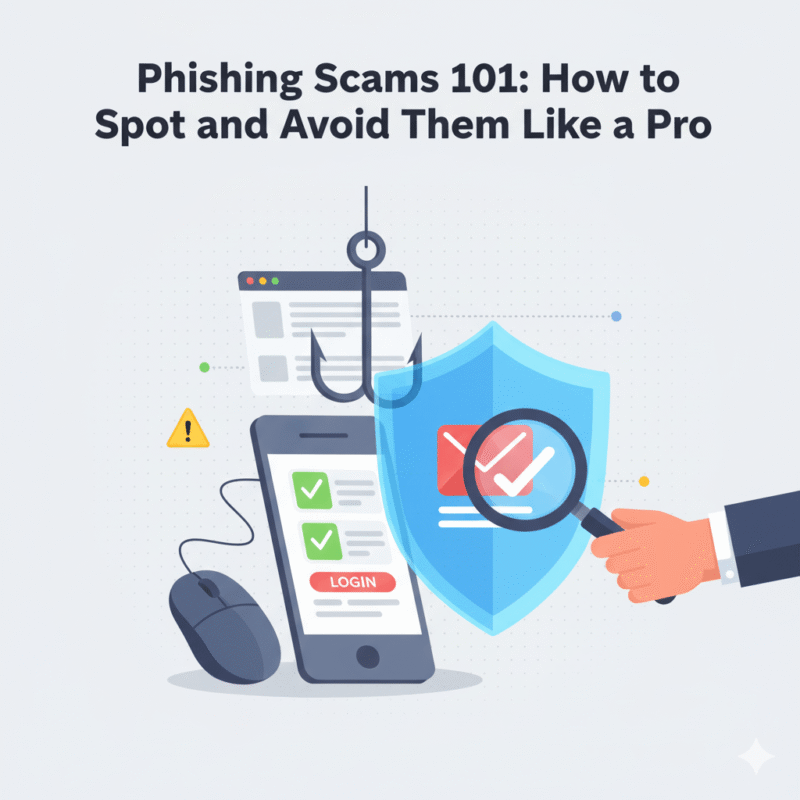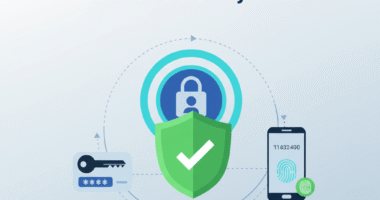In our connected world, we get dozens of emails, texts, and messages every day. Most are harmless. However, some are cleverly designed traps waiting for you to click. We call these phishing scams, and they are one of the most common threats online. The good news is that you do not have to be a cybersecurity expert to protect yourself. In fact, learning how to spot phishing is a skill anyone can master. This guide, therefore, will give you the clear, simple signs to look for so you can avoid these scams like a pro.
What is Phishing in Simple Terms?
Imagine a fisherman casting a line with bait, hoping a fish will bite. Phishing is the digital version of that. Scammers, also known as “phishers,” send fraudulent messages that appear to come from a legitimate source, like your bank, a delivery service, or a social media site. Their goal is to trick you into revealing sensitive information, such as your password, credit card number, or personal details. Ultimately, they are fishing for your data.
The 5 Telltale Signs of a Phishing Scam
You can learn **how to spot phishing** by looking for a few common red flags. Once you know what to look for, these fake messages become much easier to identify.
1. A False Sense of Urgency or Fear
Phishing scams often try to make you panic. They want you to act quickly without thinking. For example, you might see subject lines like “Your Account Has Been Suspended!” or “Suspicious Login Attempt.” These messages create a sense of urgency, pressuring you to click a link to “fix” the problem immediately. Remember, legitimate companies rarely use high-pressure tactics like this.
2. Suspicious Links and Email Addresses
This is one of the clearest signs and a key skill in learning **how to spot phishing**. Always inspect links and sender addresses carefully. A scammer might use an email address that looks almost correct, like `[email protected]` instead of `[email protected]`. Furthermore, you should always hover your mouse cursor over a link before you click it. The preview will show you the true destination. If the link looks like a random string of letters and numbers, it is probably a scam.
3. Unexpected Attachments
Be extremely wary of attachments you were not expecting, even if they seem to come from someone you know. These files, often PDFs or Word documents, can contain malware that will infect your computer. A common tactic is an email with a fake invoice attached, claiming you have an “unpaid bill.” Unless you are absolutely certain the attachment is legitimate, do not open it.
4. Generic Greetings and Poor Grammar
Legitimate companies will usually address you by your name. Phishing emails, on the other hand, often use generic greetings like “Dear Valued Customer” or “Hello User.” This is because they are sending the same message to thousands of people. In addition, many of these scams originate in countries where English is not the primary language. As a result, they often contain spelling mistakes and awkward grammar.
Beyond Email: Learning How to Spot Phishing on Your Phone
Phishing does not just happen in your inbox. It can also occur through text messages (people call this “smishing”) and even voice calls (“vishing”). A smishing text might contain a link claiming you have won a prize or that there is a problem with a recent delivery. The same rules apply: if it seems too good to be true, or if it creates a false sense of urgency, be suspicious.
What to Do if You Suspect a Scam
If you receive a message that you think might be a phishing attempt, the steps are simple. Firstly, do not click any links or open any attachments. Secondly, do not reply to the message. Finally, delete it. If you are concerned that the message might be real, contact the company directly through their official website or phone number, not through the information the suspicious message provides. The Federal Trade Commission (FTC) also provides excellent resources on how to report phishing.

Conclusion: Your Best Defense is a Healthy Dose of Skepticism
In conclusion, learning **how to spot phishing** is a crucial skill for staying safe online. By looking for the common signs—urgency, suspicious links, unexpected attachments, and generic greetings—you can avoid most of these scams. Your best defense is to slow down and think before you click. A healthy dose of skepticism is one of the most powerful tools you have to protect your digital privacy.
Help Protect Your Friends and Family!
If you found this guide helpful, share it with someone you care about. What’s the most common phishing scam you’ve seen? Share your experience in the comments to help others stay vigilant!






